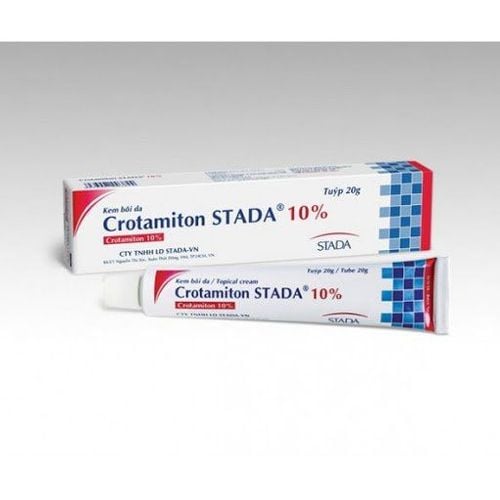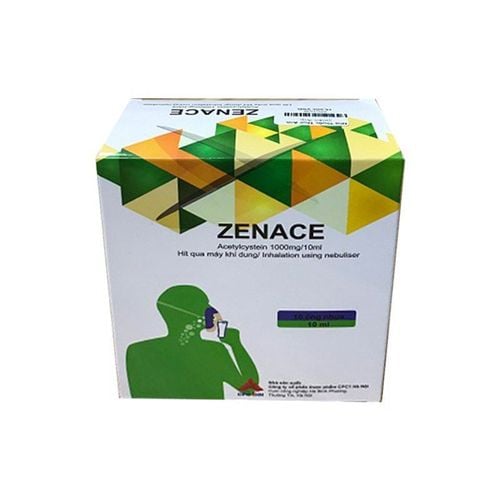This is an automatically translated article.
Rovacent is a film-coated tablet, indicated for use in cases of upper and lower respiratory tract infections, infections of the genitourinary tract, bones and joints or prevention of acute rheumatic relapse.1. What does Rovacent do?
1.1. What is Rovacent? Rovacent belongs to the group of drugs that treat parasites, infections, viruses, and fungi. The drug has registration number VNA-4606-05, manufactured by TW3 Pharmaceutical Company - Vietnam and includes the following ingredients:
Main active ingredient: Spiramycin 3 MIU. Excipients: Avicel, Magnesium stearate, Talc powder, Tapioca starch, HPMC sodium starch glycolate, PEG 6000, titanium dioxide and ethanol 96%. Rovacent is prepared in the form of 3MIU filter-coated tablets, blisters of 5 tablets, boxes of 2 blisters. The drug is recommended for use by both adults and children but should be under the supervision of a doctor.
1.2. What disease does Rovacent treat? Spiramycin is a macrolide antibiotic with a broad spectrum of antibacterial activity.
About 90% of bacteria are usually susceptible (MIC ≤ 1mcg/ml) to Spiramycin such as: Streptococcus , Staphylococcus susceptible to methicilline, Rhodococcus equi, Branhamella catarrhalis, Bordetella pertussis, Helicobacter pylori, Campylobacter jejuni, Corynebacterium diphteriae, Moraxella, Mycoplasma pneumoniae, Coxiella, Chlamydia trachomatis, Treponema palidum, Borrelia burgdorferi, Leptospira, Propionibacterium acnes, Actinomyces, Eubacterium, Porphyromonas, Mobiluncus, Mycoplasma hominis. Moderately susceptible bacteria include: Neisseria gonorrhoeae, Vibrio, Ureaplasma and Legionella pneumophila. Infrequently susceptible organisms: Streptococcus pneumoniae, Enterococcus, Campylobacter coli, Peptostreptococcus and Clostridium perfringens. Resistant bacteria (MIC > 4mcg/ml): more than 50% resistant strains include: methicillin-resistant Staphylococcus, Enterobacteriaceae, Pseudomonas, Acinetobacter, Nocardia, Fusobacterium, Bacteroides fragilis, Haemophilus influenzae and para-influenzae. Rovacent is prescribed by a doctor for use in the following cases:
Infectious diseases caused by sensitive bacteria: pharyngitis, acute sinusitis, acute bronchitis superinfection, exacerbation of chronic bronchitis, community-acquired pneumonia (no risk factors, no severe clinical signs, lack of clinical factors suggestive of pneumocoques). Oral infections, skin infections, genital infections other than gonococcal infection. Prevention of meningococcal meningitis : In cases where rifampicin is contraindicated, the aim is to eradicate N. meningitidis in the nasopharynx. Note, Rovacent is not used to treat meningococcal meningitis, but is only indicated in the prevention of patients who have recovered, before returning to activities in the group and for those who have been exposed to the disease. patient for 10 days prior to admission. Prophylaxis of recurrent rheumatic fever in patients allergic to penicillin. Prophylaxis of congenital toxoplasmosis during pregnancy. Contraindications:
Patients who are allergic to Spiramycin, Erythromycin or any of the excipients of the drug. Women are breastfeeding.
2. Usage of Rovacent
2.1. How to take Rovacent Rovacent is taken orally. Patients should take Rovacent with a sufficient amount of filtered water. When taking Rovacent, pay attention not to crush, chew or break the pill. Patients must take 1 tablet intact because this is an enteric coated dosage form. Otherwise, the drug will be destroyed by gastric juice, when it reaches the intestine, it will no longer have a therapeutic effect. Do not mix Rovacent with any other mixture. 2.2. Dosage of the drug Rovacent Adults 6 - 9 MIU divided into 2 - 3 times / day. Children > 20 kg 1.5 MIU/10 kg/day divided into 2 - 3 times. Prophylactic treatment of Meningococcus meningitis: Use for 5 days: Adults: 3MUI/12 hours, for 5 days. Children: 75,000UI/kg/12 hours, for 5 days. Handling missed dose:
Take the dose as soon as you remember. Skip the missed dose if it is almost time for your next dose, take your next dose of Rovacent as scheduled. Do not take a double dose of Rovacent prescribed. Treatment in case of overdose:
In case of overdose or accidental poisoning, notify the doctor immediately.
3. Notes when using Rovacent
The active ingredient Spiramycin crosses the placenta, but the concentration of the drug in the fetal blood is lower than in the mother's blood. In addition, the active ingredient Spiramycin does not cause complications when used for pregnant women. Therefore, the drug can be used for pregnant women in case it is absolutely necessary. Spiramycin is excreted in breast milk in high concentrations, so the drug should be discontinued while breastfeeding. Concomitant use of Rovacent with oral contraceptives will reduce the effectiveness of preventing pregnancy. Use with caution in patients with liver dysfunction Rovacent is not excreted in the active form by the kidneys, so no dose adjustment is required in case of renal failure.
4. Side effects of the drug Rovacent
At therapeutic doses, Rovacent was well tolerated. However, during the use of Rovacent, patients may still experience side effects such as:
Common: Nausea, vomiting, diarrhea and indigestion. Uncommon: Fatigue, epistaxis, sweating, chest tightness and transient paresthesia. Rare: Anaphylaxis or superinfection due to long-term use of oral spiramycin.
5. How to store Rovacent
The shelf life of Rovacent is 36 months from the date of manufacture. Store Rovacent in a cool, dry place, at a temperature not exceeding 30°C, in its original packaging and protected from light. Keep Rovacent out of reach of children. Above is all information about Rovacent drug, patients need to carefully read the instructions for use, consult a doctor / pharmacist before using. Absolutely do not arbitrarily buy Rovacent for home treatment because there may be unwanted side effects.
Please dial HOTLINE for more information or register for an appointment HERE. Download MyVinmec app to make appointments faster and to manage your bookings easily.













